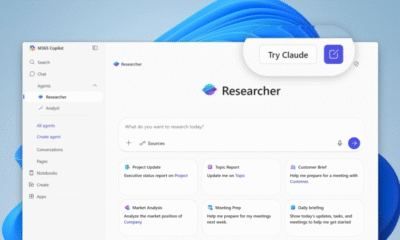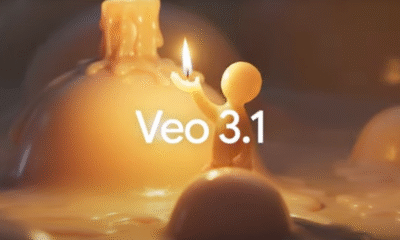AI
Unlocking the Power of Google’s Veo 3.1 AI Video Model for Enterprise Success

Google Unveils Veo 3.1: The Latest AI Video Generation Model
Google has officially announced the launch of Veo 3.1, its newest AI video generation model. This release introduces a range of creative and technical improvements aimed at enhancing narrative control, audio integration, and realism in AI-generated videos.
The updates in Veo 3.1 not only expand the creative possibilities for hobbyists and content creators using Google’s online AI creation tool, Flow, but also present a significant opportunity for enterprises, developers, and creative teams looking for scalable and customizable video solutions.
The latest version boasts higher quality, improved physics, consistent pricing, and enhanced control and editing features, making it a versatile option for various video creation needs.
Enhanced Narrative and Audio Control
Veo 3.1 builds upon its predecessor, Veo 3, with added support for dialogue, ambient sound, and other audio effects. Users can now enjoy native audio generation across key features in Flow, such as “Frames to Video,” “Ingredients to Video,” and “Extend,” enabling them to transform still images into videos, combine elements from multiple images in a single video, and generate longer clips exceeding 30 seconds. Previously, users had to manually add audio after using these features. This enhancement provides users with greater control over the tone, emotion, and storytelling aspects of their videos without the need for extensive post-production work.
In enterprise settings, this level of audio control can streamline content creation processes by eliminating the need for separate audio pipelines, facilitating the creation of training materials, marketing videos, and digital experiences with synchronized sound and visuals.
Google has emphasized that these updates in Veo 3.1 are a response to user feedback requesting enhanced artistic control and improved audio support. The ability to make edits and refinements directly within Flow without starting from scratch highlights Google’s commitment to user-friendly video creation tools.
Expanded Inputs and Editing Capabilities
With Veo 3.1, Google introduces support for multiple input types and more precise control over generated outputs. The model now accepts text prompts, images, and video clips as input and offers features like reference images, first and last frame interpolation, and scene extension to fine-tune the appearance and style of the content. These tools cater to enterprise users seeking to maintain brand consistency and adhere to creative guidelines.
Additional capabilities like “Insert” (adding objects to scenes) and “Remove” (deleting elements or characters) are also being introduced, enhancing the customization options for content creators. Some features may not be immediately available through the Gemini API, but they contribute to a more comprehensive video editing experience.
Deployment Options Across Platforms
Veo 3.1 is accessible through various Google AI services, including Flow, the Gemini API, and Vertex AI. This availability allows enterprise customers to choose between GUI-based or programmatic environments based on their specific needs and workflows. Integration with these platforms ensures seamless access to Veo 3.1’s capabilities for different user groups.
Pricing Structure and Accessibility
The Veo 3.1 model is currently in preview and exclusively available on the paid tier of the Gemini API. The pricing remains consistent with the previous Veo 3 model, offering a standard model at $0.40 per second of video and a fast model at $0.15 per second. There is no free tier, and users are only charged for successfully generated videos, providing predictability for budget-conscious enterprise teams.
The technical specifications of Veo 3.1 include video output at 720p or 1080p resolution, a 24 fps frame rate, and duration options ranging from 4 to 8 seconds from text prompts or uploaded images. The model also supports video extensions up to 148 seconds, enabling users to create longer videos with continuous motion.
-

 Video Games2 days ago
Video Games2 days agoGoku Takes on the Dragon Ball FighterZ Arena
-

 Video Games3 days ago
Video Games3 days agoTekken 8: Rise of the Shadows
-

 Amazon3 days ago
Amazon3 days agoNeil Young Takes a Stand: Pulling Music from Amazon in Protest of Jeff Bezos’ Support for Trump
-

 Tech News3 days ago
Tech News3 days agoSamsung Galaxy UI 8: Embracing the Big Free AI Upgrade
-

 Microsoft18 hours ago
Microsoft18 hours agoMicrosoft Integrates Anthropic’s Claude AI Models into 365 Copilot: A Deepening Relationship with OpenAI
-

 Cars21 hours ago
Cars21 hours agoRevving into the Future: Ferrari’s Plan to Unleash 20 New Models, Including Electric Vehicles, by 2030
-

 Security3 days ago
Security3 days agoCritical Vulnerability Exposed: Oracle EBS Targeted in Recent Cyber Attacks by Cl0p Hackers
-

 Apple3 days ago
Apple3 days agoExploring the Dystopian Realms of Pluribus: An Apple Original Series Trailer






























